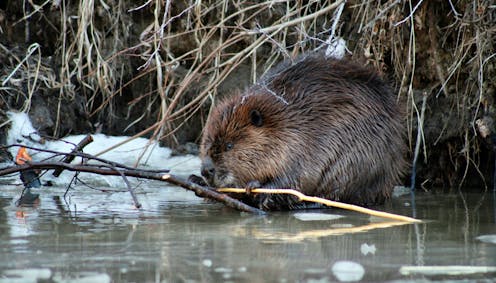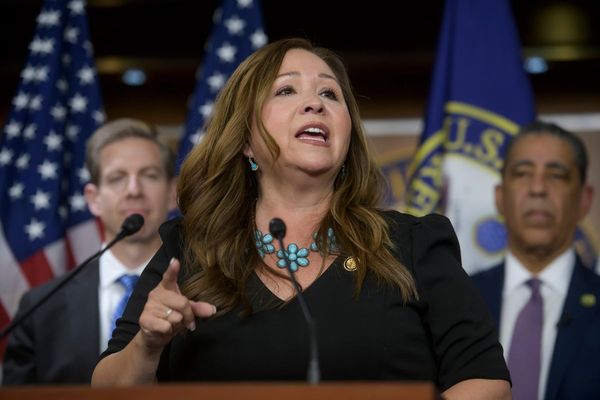
The United Nations calls access to the internet a human right. However, in Canada, the Assembly of First Nations continues to list access to the internet as a problem within First Nations communities. Although 90 per cent of Canadians have access to high-speed internet, 61 per cent of First Nations, especially those in remote or rural areas, cannot say the same.
This fall, the Ontario government announced a $34-million investment plan to address internet access in some hard-to-reach communities in southwestern Ontario. In Ontario, 39 per cent of First Nations do not have access to high-speed internet. Southwestern Integrated Fibre Technology (SWIFT) will subsidize the project.
This initiative sounds great, but digital infrastructure like the internet is often determined by non-Indigenous third parties. They set the terms, conditions and profitability of digital access for Indigenous communities. This issue is highlighted by Marisa Duarte, a professor at Arizona State University, who wrote a book critical of third parties infringing on Indigenous sovereignty by controlling network access and data for Indigenous communities in Arizona.
So, how can investments like the one in Ontario be envisioned with ethical and equitable infrastructure?
Indigenous ownership
Based on my preliminary research on data and archive infrastructure, I propose a couple of ways. For one, the ownership of the project should be shifted to Indigenous Peoples.
In this way, the power dynamic is reversed. Instead of being given permission to use a platform where their data is controlled by outsiders, Indigenous people would invite others to share in digital spaces.
Another way to augment this is to learn from Indigenous storytelling and lean into the wisdom of the natural world. To envision how we build, I propose a methodology inspired by beavers in Indigenous storytelling. Specifically, I propose that we consider the building of beaver dams as a starting point for creating and sustaining Indigenous spaces.
I draw upon the work of the Michi Saagiig Nishnaabeg storyteller and scholar, Leanne Betasamosake Simpson, and Audra Simpson, professor of anthropology at Columbia University.
Both situate the beaver dam as an ethical bridge between worlds. They also describe the beaver dam as a site of protest. It is one in which Indigenous thinkers and dreamers build their own sustainable and ethical infrastructure.
Beavers and blockades
In these Indigenous stories, passing on the knowledge to build the beaver dam to the next generation is a form of direct action that is connected to the act of protest.
Blockades are metaphorical in these stories but they are also literally blockades that Indigenous Peoples build during protests to protect their lands and waters.
In this particular case, the blockade, or refusal, is metaphorical and may include saying “no” to third-party control of Internet infrastructure.
The beaver dam
While the beaver dam acts as a physical blockade, it is also regenerating the environment around it.
This environmental regeneration by beavers was supported by a NASA grant in 2024.
Using data, land trust managers attracted beavers to areas that needed to bring back water and life following environmental disasters. In this way, people are “enlisting the aid of nature’s most prolific engineers — beavers,” according to NASA science writer Margo Pierce.
This relationship between beavers and the human world is seen as an important part of maintaining harmony in Indigenous communities. As Betasamosake Simpson says, harming the beaver harms everyone in the community because the beaver brings water and life.
Bringing relational practices into design
This emphasis on working together and with nature because everyone is interconnected is a relational practice I believe can be applied to infrastructure, design and policy.
Prof. M. Murphy at the University of Toronto, a leader at the Technoscience Research Unit, thinks through how establishing values and ethics for infrastructure projects can change our relationships.
These small changes can be part of the shift away from public infrastructure that is exclusionary, and towards public infrastructure that is collaborative and a true regenerative public space.
Power and infrastructure
Returning to the story of rural internet in Ontario, whoever builds the digital infrastructure has the power to impact the communities that are gaining access to the internet — their human rights access — through a third party.
However, if the ownership of this new infrastructure remains out of the community, there will likely continue to be a lack of resources put towards building bridges between communities..
This creates a challenge. I am stewarding online spaces for Indigenous storytelling but the infrastructure of my projects is owned by the University of Toronto, and access to it is at the mercy of other third parties.
These bridges are not just invisible ideas or metaphors but real cables and structures through which the internet is shared.
These structures are part of a larger power dynamic being exercised by both the government and private companies. They choose to include only particular Indigenous communities as specialized projects instead of ongoing strategic partners of their businesses.
Building the blockade
To properly work against such power structures, organizations must understand the power dynamics within a community.
There are organizations in Ontario taking on the metaphorical role of the beaver, such as the future Public Library in Ottawa, Ādisōke. This organization has Indigenous partners embedded within its design, infrastructure and future.
Public libraries are potentially hubs for community regeneration, as sites to honour human rights and provide access to both information and internet. But this requires a commitment to long-term funding.
Control and consent
With the Ontario provincial government subsidizing third parties, there is an issue of ownership and control. Communities are not given control of the infrastructure intended to regenerate community.
This is not to say SWIFT or the companies building this infrastructure are actively engaging in bad faith, but the power dynamics obfuscate the infrastructure and how it will relate to the community.
On the surface, it looks like the $34 million is going to subsidize projects to profit from remote areas without having to invest directly.
But, ultimately, for these projects to be successfully integrated, these First Nations communities need to be involved in the building of it: using a model that emulates the beaver dam and includes mutual consent between all parties.
Revisioning
Right now, companies continue to dominate Indigenous data, whether it is the data collected through programs like Zoom, or the very infrastructures that enable Zoom.
However, I am optimistic. Re-envisioning how we engage in building infrastructure as a relational practice, we can build like beavers and aim for structural regeneration and sustainable digital infrastructure in the community’s hands.
Andrew Wiebe does not work for, consult, own shares in or receive funding from any company or organisation that would benefit from this article, and has disclosed no relevant affiliations beyond their academic appointment.
This article was originally published on The Conversation. Read the original article.







